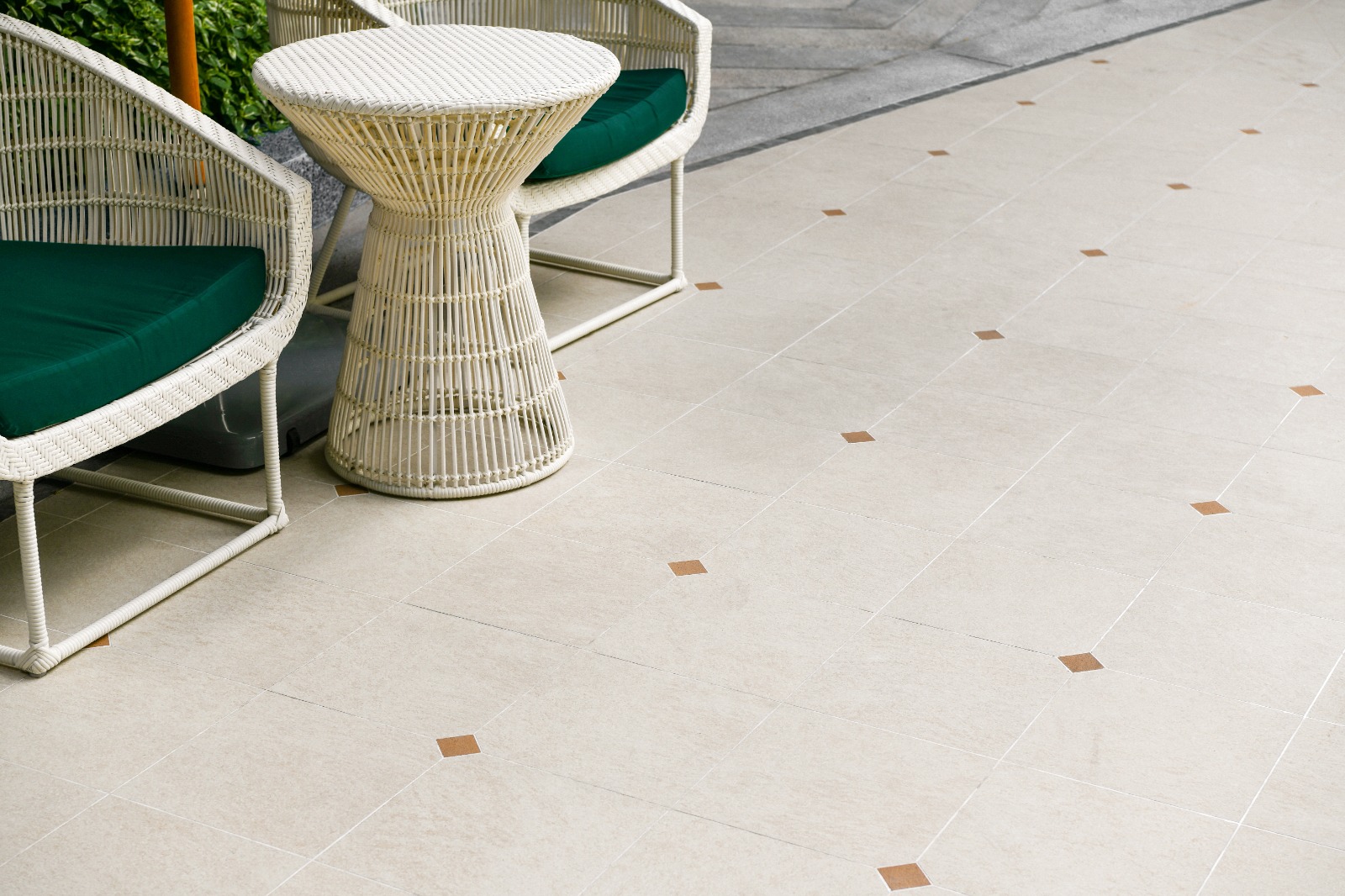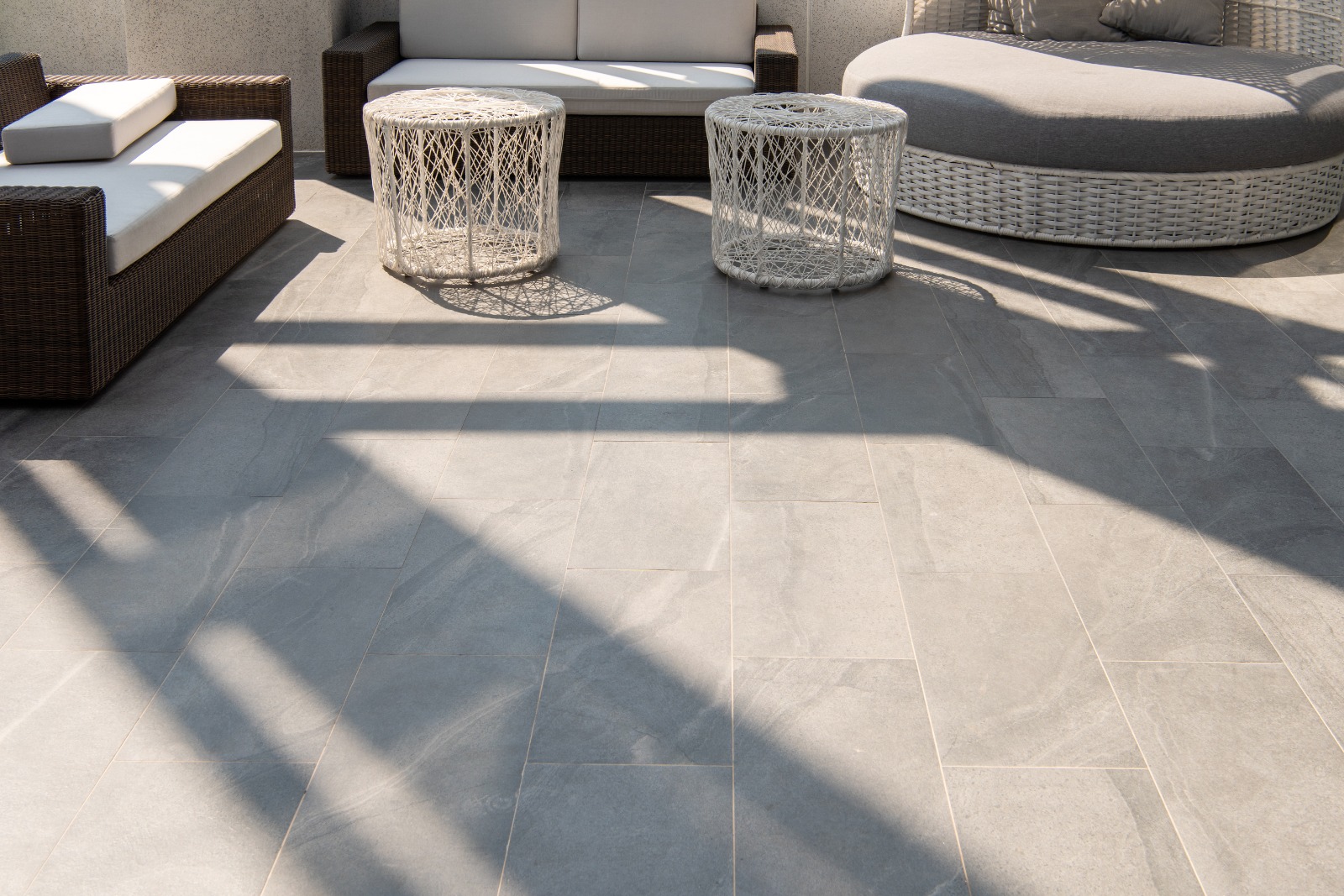Exterior floor tiles are the best option when we want to
design our terrace, courtyard or even balcony. However, choosing the right type
of exterior floor tiles is not very simple.
To choose the exterior floor tiles that best suit your
needs, it is very important to know that they can be found on the Romanian
market in a wide range of colors, textures, and finishes. The use of exterior floor
tiles offers unlimited design possibilities, as a result of the varied models
available on the market.
In general, floor tiles are preferred by buyers because they
can be applied directly to floors, so they can be installed both indoors and
outdoors. Its advantages are multiple: it is installed quickly and easily, is
durable over time, easy to clean and does not require special maintenance, as
in the case of other surfaces.
Types of Exterior Floor Tiles
Porcelain floor tiles are formed by firing ceramic plates at
very high temperatures above 1200⁰C. As a result of the high temperatures, the
process called “vitrification” occurs, resulting in a compact and
highly resistant tile. Due to its density, porcelain floor tiles can be used
under high wear conditions, and due to their hardness, they resist heavy
traffic, being used for outdoor floors.
Unlike indoor floor tiles, porcelain tiles can be used for
outdoor spaces. Indoor floor tiles do not withstand high temperature variations
and increased wear and tear. Porcelain floor tiles are produced with a matte,
glossy, or polished surface through the polishing process (polished tiles
receive a noble, shiny surface).
The advantage of porcelain floor tiles is that they can also
be used for interiors.
The term “rectified tiles” does not refer to the
physical or mechanical properties of the tiles, but to the process of
rectifying the tiles, that is, cutting the edges of the ceramic tiles so that
they form a 90⁰ angle. This results in rectified floor tiles being uniformly
suitable on the surface to which they are applied, with a dimensional deviation
between tiles of max. 0.1 mm. In general, non-rectified floor tiles may have
small size differences of 1-2 mm, caused by the shrinkage phenomenon after the
firing process.
Freeze-resistant exterior floor tiles
It is important to consider that we live in a country with
four seasons, which is why we need to consider the use of exterior floor tiles
that are resistant to freezing.
Most of the time, such arrangements are made in summer, and
many simply forget to consider temperature variations when choosing the
materials they will use. Given that in Romania, during winter, temperatures
drop even below -15 degrees Celsius, it is advisable to choose frost-resistant
floor tiles for outdoor spaces, such as terraces or balconies.
Porcelain floor tiles are frost-resistant, so they are the
most recommended type of tiles for designing outdoor spaces. Frost-resistant
floor tiles can be found on the Romanian market in a variety of models and
colors.
Anti-slip exterior floor tiles
As previously mentioned, the best type of exterior floor
tile is porcelain, but it is important to keep in mind that not all porcelain
floor tiles react the same way.
Therefore, it is important to take into account the PEI
(Porcelain Enamel Institute) classification, which measures the wear resistance
(abrasion) of floor tiles using a special device with abrasive rollers.
There are five wear resistance indexes, and the floor tile
is chosen based on the degree of wear to which it will be subjected, and
therefore the space in which it will be installed:
PEI I – for areas with light traffic (bathroom, bedroom)
PEI II – for areas with moderate traffic
PEI III – for residential areas with heavy traffic
(kitchens, hallways, stairs, terraces, courtyards, walkways)
PEI IV – for commercial areas with medium traffic, such as
offices or hotel rooms
PEI V – for commercial areas with heavy traffic, such as
shops, city pedestrian walkways, etc.
For greater comfort and safety, it is important to consider
the slip resistance of the tiles when purchasing a particular type/model of
outdoor tile. Therefore, it is important to choose the best anti-slip floor tile
for areas where there is a higher possibility of the tile becoming wet or even
frozen, such as near swimming pools or on entrance stairs. The classification
for slip resistance of floors is called the Rating for Shod Feet and has five
categories:
R9 – very low slip resistance (used for hallways, stairs,
medical offices, etc.)
R10 – low slip resistance (surfaces used in restaurants,
medical offices, etc.)
R11 – medium slip resistance (warehouses, cafeterias, auto repair
shops)
R12 – good slip resistance (cold rooms, etc.)
R13 – very good slip resistance, as is the case with car
ramps, parking lots, or large industrial kitchens.
Outdoor floor tiles for terraces
For exterior terraces, it is important to use non-slip and
frost-resistant porcelain floor tiles as they are typically exposed to harsh
weather conditions.
For example, CESAROM Garden is a collection of porcelain floor
tiles that are ideal for both terraces and courtyards.
Outdoor porcelain floor tiles are the best choice for
design, functionality, maintenance, and durability for the exterior space that
needs to be arranged.
Outdoor floor tiles for stairs
When it comes to outdoor stairs, it is also important to
choose frost-resistant and slip-resistant porcelain floor tiles. Pre-made
porcelain floor tiles for stairs are available on the market, and the advantage
is that they are extremely easy to install and do not require additional
accessories such as corner pieces.
Finishes
There are several types of outdoor tiles available when it
comes to design, such as stone or marble.
Outdoor tiles have the advantage of a wide range of
finishes. Due to the large number of finish options available, this type of
tile can be adapted to any project, whether you want a certain color or a tile
that imitates stone, for example. As such, there are several types of finishes
available for outdoor tiles, including:
·
glossy
·
matte
·
semi-gloss
·
stone-like
·
wood-like
·
concrete-like
However, indoor floor tiles cannot be used for outdoor
projects as they do not have the necessary technical characteristics.
In comparison, porcelain floor tiles are more expensive than
glazed tiles. Nevertheless, the price difference is reflected in durability and
resistance, which means long-term savings.
You can find various types of outdoor floor tiles that fit
your needs in the CESAROM collections, available HERE.





